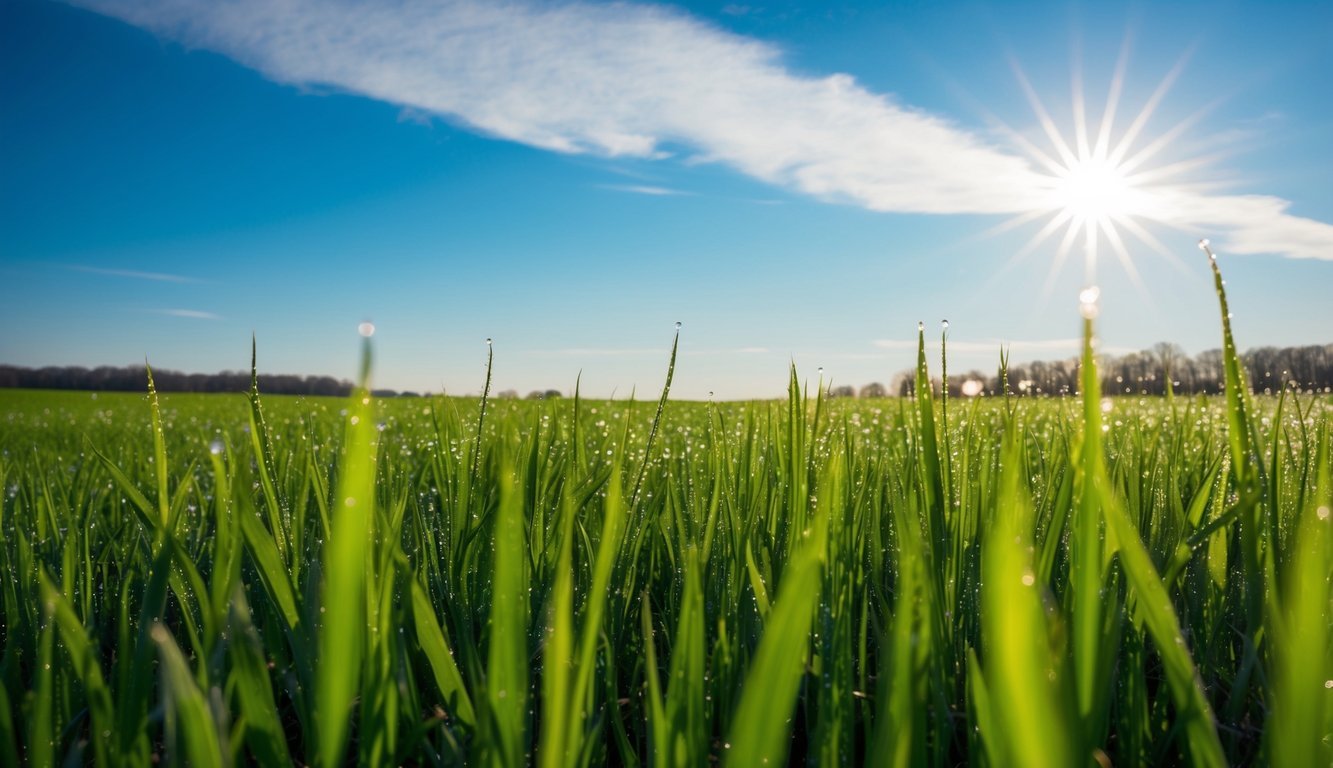
Researchers at Washington State University (WSU) have unveiled a groundbreaking new variety of Kentucky bluegrass called “Matchless.” This innovative grass is a descendant of the popular “Kenblue” variety and aims to offer seed growers higher yields while reducing the environmental drawbacks linked to the traditional practice of field burning.
Impact of the Burn Ban on Bluegrass Production
Field burning was once a common tactic among Kentucky bluegrass farmers, especially in the Pacific Northwest, during the latter half of the 20th century.
Growers used this method to cleanse harvested fields, manage thatch, combat diseases, and benefit from various other effects.
However, in 1998, Washington state enacted a ban on burning due to rising concerns over air quality and safety issues.
This state alone accounts for around 80% of the world’s Kentucky bluegrass seed production.
The burn ban had a significant impact on Washington’s bluegrass seed industry.
Michael Neff, a professor at WSU and leader of the turfgrass research program, observed that while the ban didn’t eliminate dryland bluegrass seed production, it limited the diversity of crops growers could cultivate and led to higher production costs.
With the introduction of Matchless, growers stand to gain not only improved yields but also greater profitability.
Environmental and Market Trends
While burning has become more restricted, Oregon has outright prohibited it as well, and Idaho has imposed stringent regulations, allowing it only under specific conditions.
By banning this practice, the region has benefited environmentally.
Importantly, there’s a growing market for environmentally friendly products, appealing to consumers who prioritize sustainable choices.
According to Professor Neff, there’s a rising consumer awareness about the ecological repercussions of their purchases.
This trend suggests that Matchless can be marketed as an environmentally sustainable and economically advantageous option compared to traditional burning methods.
The Breeding Process
The journey to develop Matchless began with Bill Johnston, a former WSU professor who cleverly named the variety to indicate that no matches are required to cultivate it, nor are there any competitors to its impressive yield.
After Johnston’s initial work, Neff and his team dedicated several additional years to further development and secure plant protection for this new variety.
Breeding new varieties of Kentucky bluegrass is no simple task.
It diverges from typical plant breeding, primarily because the unique reproductive characteristics of bluegrass often result in a predominance of cloned offspring.
Finding variations among these clones requires both skill and a significant investment of time.
PhD candidate Jonathan Schnore, part of Neff’s lab, pointed out that cloned plants offer remarkable uniformity, yet he stressed the importance of genetic diversity for effective breeding.
This complexity leads breeders to sift through massive populations of similar plants to identify a single standout specimen.
Neff underscored the importance of their intricate work, noting that Kentucky bluegrass is cherished for its beauty and resilience.
It has become a favorite choice for applications like sports fields, golf courses, and home lawns.
He described this grass as not just visually appealing but also comfortable underfoot, with impressive recovery capabilities from damage.
Although consumers may not easily distinguish Matchless when selecting seed or sod, it bears a close resemblance to other Kentucky bluegrass varieties.
Typically, seed products consist of a blend of various species and varieties, making it hard for customers to pinpoint individual grasses in what they purchase.
Currently, Matchless is owned by Washington State University and is protected in the United States by a Plant Variety Protection Certificate granted by the USDA.
Source: ScienceDaily

